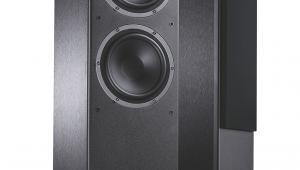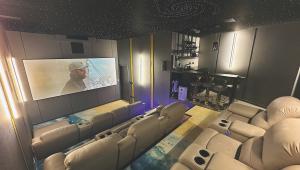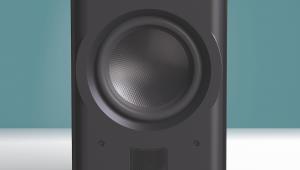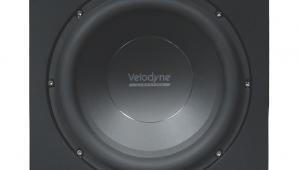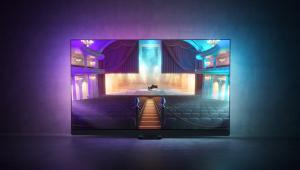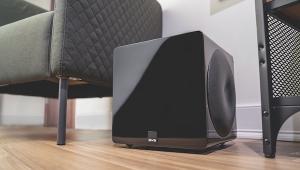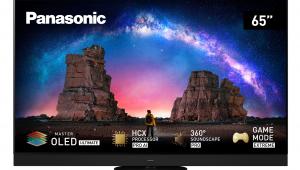Sky Q Silver review
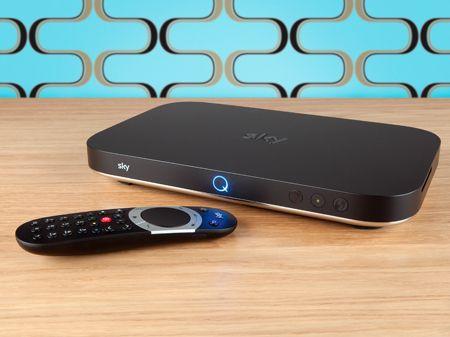
 To be honest, I was both excited and anxious about using Sky Q. From its distinctive handset to Planner grid, classic Sky has been a home comfort for the best part of a decade. The idea of junking it all in favour of some new-fangled product seemed a tad reckless. But the lure of a hybrid system mixing satellite delivery with streaming is too tempting to ignore – as is the prospect of 4K channels launching this Summer.
To be honest, I was both excited and anxious about using Sky Q. From its distinctive handset to Planner grid, classic Sky has been a home comfort for the best part of a decade. The idea of junking it all in favour of some new-fangled product seemed a tad reckless. But the lure of a hybrid system mixing satellite delivery with streaming is too tempting to ignore – as is the prospect of 4K channels launching this Summer.
The Sky Q ecosystem is radically different to what we've had before, not least when it comes to multiroom viewing. Until now, that’s been predicated on the clumsy idea of multiple cabled boxes which work in splendid isolation. But Sky Q has reworked the concept for the Netflix generation. The satcaster calls it Fluid Viewing, and there's more to it than just a natty marketing slogan.
With Sky Q, the new Silver PVR acts as a hub for connected Sky Q Mini boxes. These essentially stream content from the Silver. Not only can you watch live TV on a Sky Q Mini, but also your own recordings and on-demand content. The experience is transformative.
Beating the QWhen Sky Q is installed the first thing to go may be your old dish. The new platform requires an all-new wideband LNB, and to fit it my Sky installers simply swapped out the entire dish ('Much easier,' they explained). Existing cabling, however, remains intact. The Silver PVR still requires two feeds, but these now download the entire satellite stream to the box itself.
The PVR is considerably slimmer than the old Sky+HD box, yet it still houses a 2TB drive, in addition to 12(!) tuners. Not all of these are currently used, but you can now record four programmes simultaneously (a feature I've longed for more than you might imagine) and watch a fifth, while streaming to two Sky Q Minis. 300GB of that Silver hard drive space is reserved by Sky for push content.
The box has an elegant design with a silky finish and embossed logo. The rear panel comprises twin F-connectors, HDMI, Ethernet and an optical audio output. There are also two USB ports (not currently functional) and a second, covered HDMI. This transpires to be an input, presumably to loop through another HDMI device at some point. There’s Wi-Fi too, working 2.4GHz and 5GHz bands concurrently.
Obviously Sky would like its subscribers to buy into its entire broadband ecosystem, but this isn't a prerequisite. I used a third-party ISP.
The system comes with an on-trend Bluetooth remote control. Called Q Touch, it has an integrated mic for voice search to be added at some point in the future. Traditionally I hold little truck with such devices, much preferring retro IR zappers, but I've got to admit to rather warming to it. It certainly takes a little patience to master, but the trackpad is astonishingly responsive. You really don't need to paint in broad thumb strokes. I can now skate about quite effortlessly, but there is one manoeuvre.I still find tricky – fast-forward. This is driven via a touch-sensitive ring around the main pad and requires effort to manage. I've been overshooting where I want to get to.
The Sky Q Mini is, unsurprisingly, a good deal smaller than the Silver. But it's a cosmetic match, with HDMI, Ethernet and optical audio output. It's also Wi-Fi-enabled. The Mini doesn't come with that Bluetooth controller, preferring an IR remote with traditional buttons. This can also be used with the main box, which is useful if you or a family member can't get on with the Q Touch's trackpad.
A WPS button on the Mini pairs it with the main Silver box. In most circumstances, it'll communicate over Wi-Fi but in difficult locations you can network over a LAN.
While only two Sky Q Minis can stream from the mother box simultaneously, you can actually pair more. But if you try them all at the same time, you'll get a message that you've exceeded your connection quota.
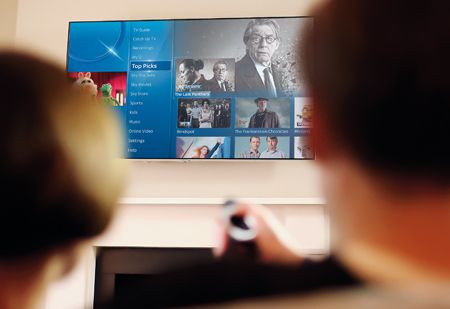
As well as fresh hardware, Sky Q features a new interface, and it's as pretty as a picture. There's thumbnail art for practically everything, with dollops of metadata gluing the whole shebang together. Yet while there can seem a dizzying amount of functionality, it doesn't take long to absorb.
Click the Sky logo on the remote and you're immediately in the Recordings menu. Shows are thumbnailed to the right, with the most recent on top. Typically within Sky Q, menu items stand vertically, and you navigate horizontally. If you don't want to see your recordings chronologically, you can filter everything in an A-Z list. You can also see at a glance what's scheduled to record.
There're cool visual cues to help move you around. When there are deep menus to explore you see what appears to be a stacked panel. And to help remind you where you are, your 'cursor' is an arty starburst effect.
Hit the remote’s Home button and you're presented with a genre-based content tree, topped by the programme guide. Below this are channel catch-up players (amounting to 38 at the time of writing), as well as boxsets, movies, sport, kids and music menus. As with Sky+HD, you can view your photos via the Sky box. However, now there’s also AirPlay and Bluetooth music streaming support, which will be useful to some.
Of course, a TV platform built on an IP infrastructure can leave itself vulnerable. A broadband outage resulted in my Q UI largely blanking out. While recordings, live TV and programme guide were unaffected, other functionality vanished until the broadband connection was restored.
There are several entirely new areas to investigate on the Q platform. The My Q tab takes you to shows you may be halfway through, or presumptuously offers up new episodes for stuff you've recently watched. The ‘i’ button also calls up an info pane across the bottom of the screen, with a capsule description of what you're viewing, as well as what comes next.
And Sky Q makes a lot of assumptions. For example, when you record a new show it puts a series link on the programme by default; more often than not you'll want to do this anyway, so it's a welcome bit of hand-holding.
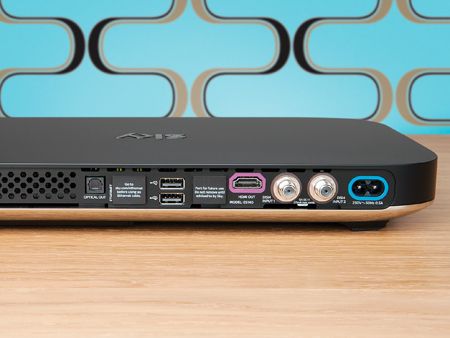
Where the system really becomes transformational is with multiroom. The freedom to watch Sky anywhere around the house is brilliant.
Content is streamed across a locked 5GHz channel. If you have more than one Mini, perhaps two working in second-floor rooms, they form a mesh network. This approach is a smart way to reinforce distribution (it's the same idea popularised by Sonos). And if you have a Sky router, Minis become Wi-Fi hotspots.
The viewing experience on these second-room boxes is virtually identical to that on the main Silver, albeit without any PIP effects. The Q menu is identical, with all your recordings waiting to be watched or resumed. Miraculously, there's no evident sacrifice in image quality. Everything I streamed looked and sounded the same. Watching in HD, I didn't experience any buffering or image degradation. It seemed like a perfect mirror.
But that's not to say I didn't experience some hiccups. A 'Network proximity' error message appeared when for some reason my Mini lost a connection with its parent, and I experienced some shuddering of the onscreen UI – literally a juddering as I nav'd around – although this never affected the image.
Another niggle is that Sky doesn't allow subscribers to have more than one Silver PVR, nor mix the new hardware with existing Sky+HD gear. This might feel restrictive if you currently live with multiple Sky+HD boxes – after all that's a lot of recording capacity to lose. However, with the massive increase in on-demand content, and the ability to quaff recordings anywhere around the house, that loss of physical recording capacity isn't a deal-breaker.
What’s more, you don't need a Mini to watch recordings remotely. The Sky Q app (for iOS and Android) mimics the Q interface and offers the same niceties. You don't even need to log in when you're on the same network, the app just finds your Silver box and you’re connected. You can also download recordings to watch when away from your home.
Although the Q box features new silicon, image and audio quality prove to be indistinguishable from my previous Sky+HD box. To be honest, I stopped watching Sky's SD channels some time ago, and can merely report that they look as fuzzy here as I remember them to be. But the Sky HD bouquet looks terrific, and Dolby Digital 5.1 is thoroughly entertaining.
I was irked by one thing though. When playing back recordings, the Q logo spins a vivid blue. The LED is really intense, and while this might look good in a showroom, at home with the lights down it’s a perennial distraction. Please Sky, whatever you do next, build a dimmer into a firmware update.
It should be noted that the Sky Q Mini is not a 4K device. When Sky starts 4K programming later in August and you start recording 4K shows, the Mini probably won’t even see them. And with a limit of one Silver box per household, you won’t be watching 4K on multiple screens around your home anytime soon.
Successful successorThe introduction of Sky Q is a bold move by the satcaster, and one that seems to have been meticulously planned. As a step-up from Sky+HD, it's startlingly successful. I can't wait to see what's Qoming next...
Specification
Sky Q Silver
HDD: Yes. 2TB
Catchup channels: Yes. BBC iPlayer, ITV Hub, Sky One, Sky Atlantic, Sy-Fy and so on…
Connections: 1 x HDMI output (plus an HDMI input as yet unused); 1 x optical digital audio output; 1 x Ethernet; 2 x USB (for future use)
Dimensions: 232(w) x 155(h) x 34(d)mm
Weight: 1.7kg
Features: Bluetooth and Apple AirPlay streaming; record four shows, watch a fifth live; MiMo dual-band Wi-Fi; 4K ready; Bluetooth Q Touch controller
Sky Q Mini
HDD: No.
Connections: 1 x HDMI out; 1 x optical digital audio out; 1 x Ethernet; 1 x USB (future use) Dimensions: 232 (w) x 155(h) x 35(d)mm
Weight: 0.5kg
Features: Dual-band Wi-Fi; remote record; live and pre-recorded channel streaming; on-demand streamer
 |
Home Cinema Choice #351 is on sale now, featuring: Samsung S95D flagship OLED TV; Ascendo loudspeakers; Pioneer VSA-LX805 AV receiver; UST projector roundup; 2024’s summer movies; Conan 4K; and more
|






